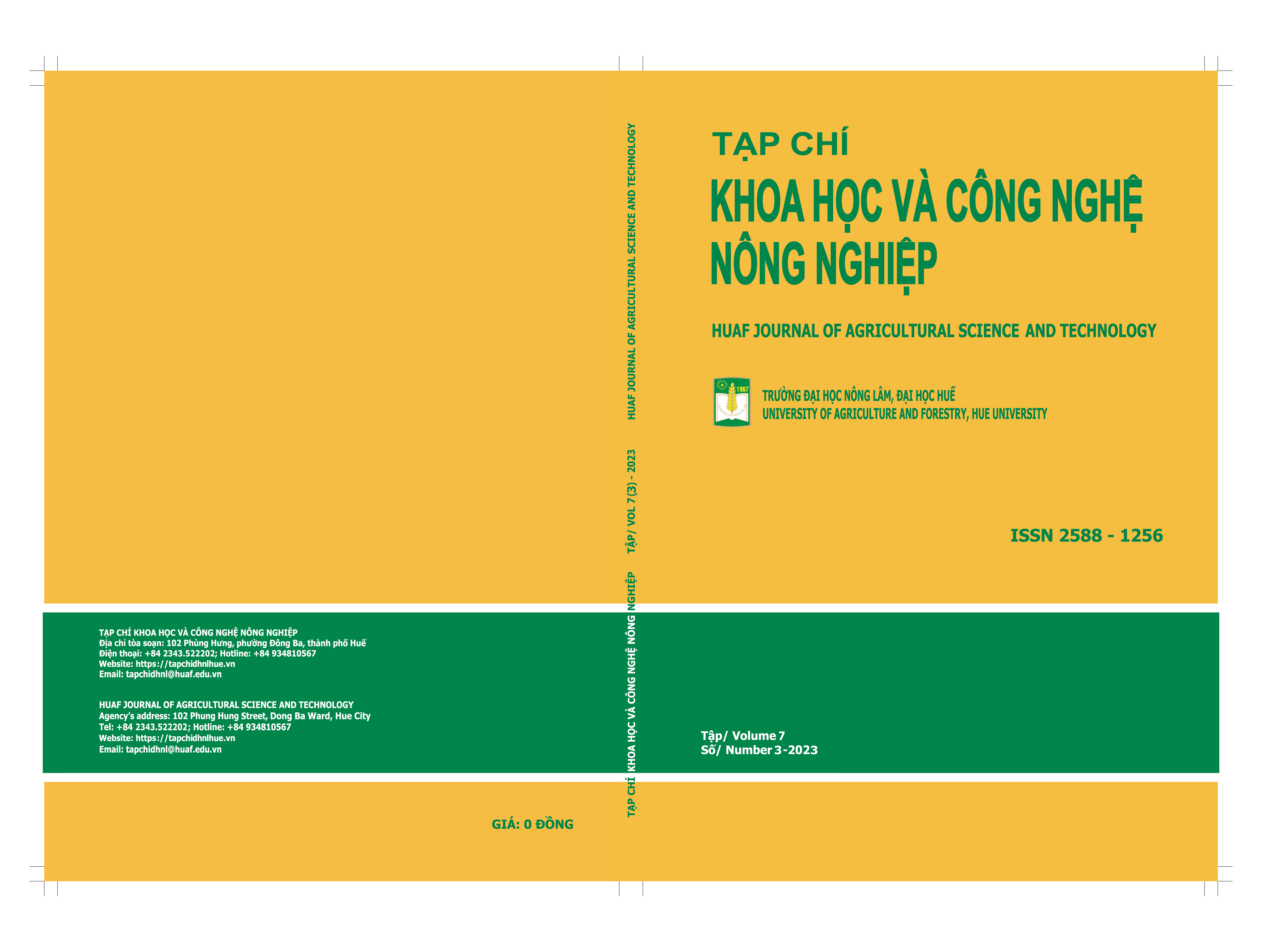##plugins.themes.huaf_theme.article.main##
Abstract
The objective of the study is to create a forecast map of natural deforestation in Nam Dong district, Thua Thien Hue province. Eight deforestation prediction factors (elevation, slope, distance from residential areas, distance from rivers and streams, and distance from nearest road) were chosen and identified different levels of deforestation probability through a frequency ratio model in GIS. Two image scenes of the Landsat 5 Thematic mapper (TM) satellite in 2005 and the Landsat 8 Operational Land Imager (OLI) in 2020 were also used to assess natural forest change and forest fragmentation. The frequency ratio model ensures reliability and has good capacity of predicting location of deforestation probability (validating AUC = 0,805). The results showed that about 4.1% of the natural forest area has been deforested over the past 15 years (2005-2020). Out of 47,805.4 hectares of existing natural forest in 2020, about 8.88% was assessed at the level of the high level of deforestation probability, 12.69% at medium level, 53.65% at low level, and 24.79% at very low level. The areas of high level of deforestation probability need appropriate intervention activities to minimize the loss of natural forests. In addition, the integrated method involving the frequency ratio model, forest fragmentation, GIS and remote sensing techniques have proved usefully in analyzing the different levels of deforestation probabilty and identifying causative factors in the study area.

